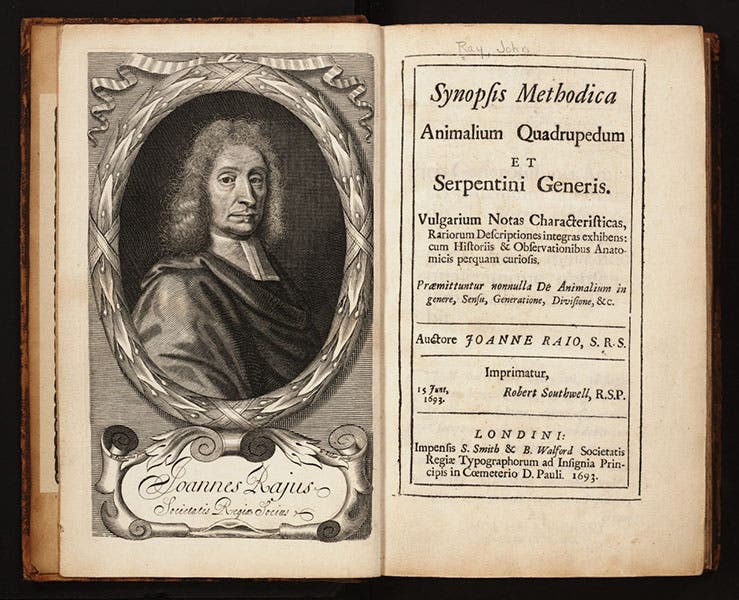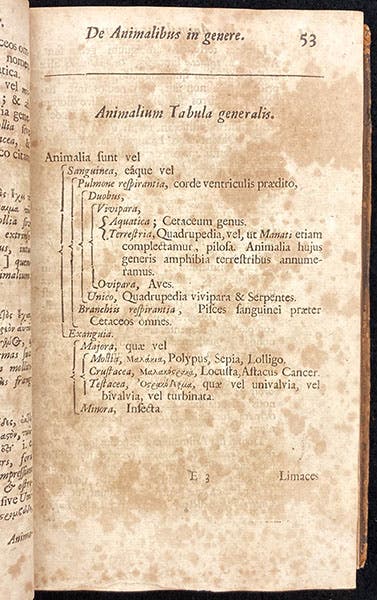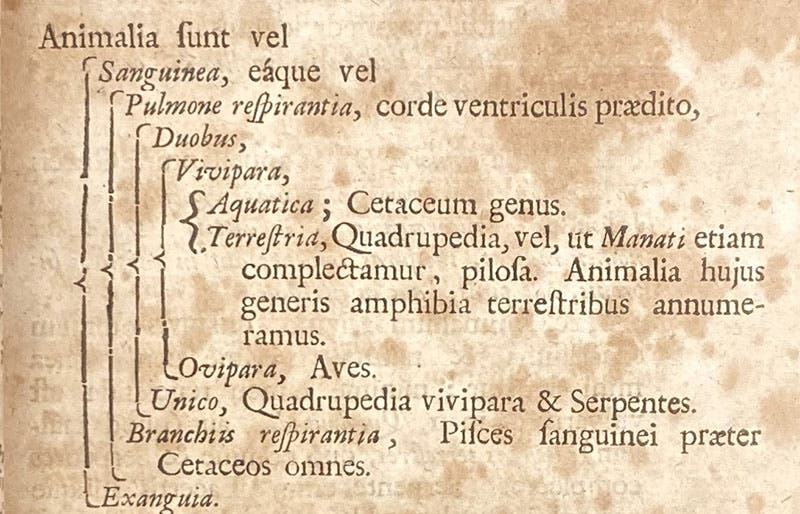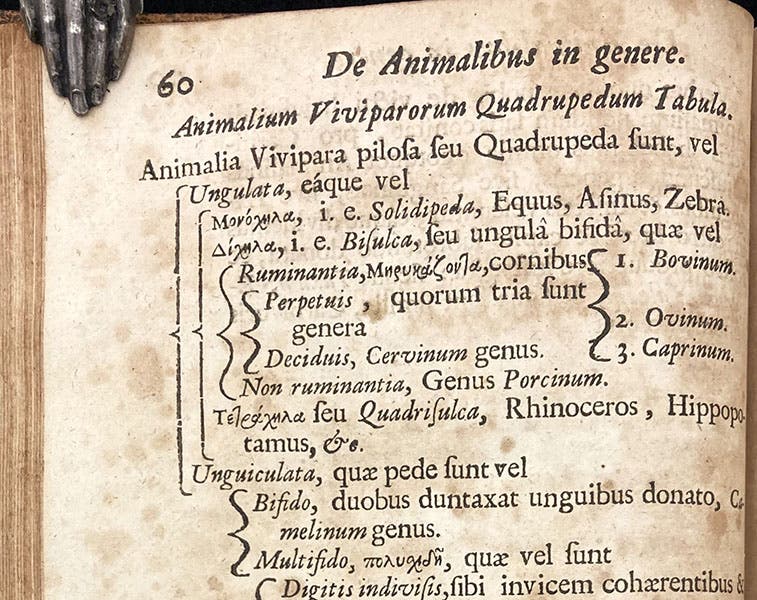Scientist of the Day - John Ray
John Ray, an English naturalist and cleric, was born Nov. 29, 1627. Seven years ago, we wrote our first post on Ray, in which we credited Ray with being the greatest naturalist in early modern England, discussed his importance in defining and pursuing natural theology, and described the Ray Society founded in his honor in the1840s. We mentioned Ray’s Synopsis of Quadrupeds (1693), and showed the titlepage of that work with its frontispiece portrait, but had nothing further to say about the book.
On this occasion, I would like to probe further into this remarkable work, with the full title of: Synopsis methodica animalium quadrupedum et serpentini generis. It was written in the tradition of the great animal encyclopedias of Conrad Gessner, Ulisse Aldrovandi, and Joannes Jonston, but it looks nothing like its predecessors, and it does not read like them either. It is a small octavo, only 336 pages long, without a single illustration. It describes in Latin each genus of animals in a page or two, paying almost no attention to the long descriptions in the works of Gesner and Aldrovandi, relying instead on his own observations, or those of trusted contemporaries such as Thomas Browne and Ole Worm. Ray will have nothing to do with hearsay, and if the existence of an animal genus is not well established by reliable authority, it is excluded. There are no unicorns here.
But by far the most remarkable feature of the Synopsis is that it presents Ray's attempt to classify the animal kingdom as a whole, as well as the class of quadrupeds (the word “mammal” had not yet been coined). The ancient biologist Aristotle had produced the first useful taxonomy of animals, for which he divided animals into two large groups, those with blood, and those without, and then subdivided the blooded animals into those that give birth to their young alive and those that lay eggs; his final division involved whether they were quadrupeds, bipeds, or legless. With these few criteria, Aristotle was able to provide criteria for defining quadrupeds (mammals), birds, reptiles, and fish.
In the 2000 years since Aristotle, taxonomy had not improved much. Some later naturalists used environment as a principal criterion – land animals, water animals, and animals of the air. Any further attempt at organization was alphabetical. That was the organizing principle of Gessner’s Historia animalium of 1551. Taxonomy was not the principal interest of the encyclopedists.
John Ray was really the first naturalist to attempt an improvement of Aristotle's taxonomic system. And he outlined his new system on a single page of the Synopsis (third image). This is the kind of page from which, if you encountered it while leafing through the book, you would certainly recoil, with its nest of brackets and its obscure Latin descriptors. But if you force yourself to look at it for a minute, you will be impressed by Ray’s system and the economic way he presents it. Basically, like Aristotle, he divided the animal kingdom into two parts, and then each part into two again, and then again, until he reached what appeared to be natural groupings. Each division is indicated on the chart by a bracket, with further divisions noted by smaller brackets within the larger ones, and with snippets of text describing the subdivision process.
You can follow along in the detail (fourth image) as I roughly translate: Animals are either (vel … vel means either … or) blooded (sanguinea) or bloodless (exsanguia); the blooded animals breathe with either lungs (pulmone respirantia) or with gills (branchiis); the animals with lungs are endowed with either a two-ventricle heart , or a one-ventricle heart; those with two ventricles are either viviparous or oviparous; those that are viviparous are either aquatic or terrestrial. By these criteria, Ray separates viviparous quadrupeds (mammals) from egg-laying quadrupeds (reptiles and snakes), egg-layers with a two-part heart (birds), and animals that breathe with gills (fish), as you can see by picking out the Latin terms: Pisces, Aves; Quadrupeds. It is a remarkably concise but useful system, improving on Aristotle with the addition of methods of respiration as a criterion for taxonomic division.
Ray didn't do so well with the bloodless creatures, what we would call invertebrates, simply naming the major groups such as crustacea without defining them, but then, this is a synopsis of quadrupeds and snakes, not invertebrates. He did attempt on another page to break down further the class of viviparous quadrupeds into its major genera, using criteria such as teeth and foot structure, and we show you part of that page (fifth image), but it is really too complex to discuss here. But he did find a way to distinguish scientifically ruminants and solid-hooved herbivores from rodents and carnivores and the other orders we recognize today.
Ray’s classification of vertebrates and quadrupeds was the first major advance in taxonomy since Aristotle, and Ray would not be improved upon until the work of Carl Linnaeus, in his Systema naturae of 1735 and later. Ray’s contribution to taxonomy is often passed over, since it is the system of Linnaeus that forms the basis for modern taxonomy. But Ray’s system deserves appreciation; he and Aristotle made it possible for Linnaeus to institute his reform of taxonomy, and whenever you are mentioned in the same breath as Aristotle in a biological matter, you have done something right.
William B. Ashworth, Jr., Consultant for the History of Science, Linda Hall Library and Associate Professor emeritus, Department of History, University of Missouri-Kansas City. Comments or corrections are welcome; please direct to ashworthw@umkc.edu.











